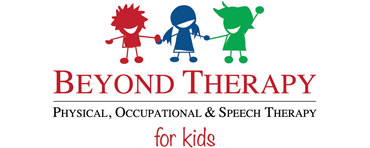If there was one topic in the realm of pediatric physical therapy for which I suspected a need for education, that topic would be the importance of creeping. You’re probably thinking, “Creeping? What on earth is that? I’ve never heard that word before.” Creeping is the term that physical therapists use to describe what you may have previously considered as crawling. Creeping is the means of mobility a baby uses when he or she gets up on hands and knees with the belly off the floor and reciprocally moves arms and legs to progress towards a desired object. This skill typically emerges around 9 months of age. You may initially argue that creeping is irrelevant, since some major organizations and even certain documentaries on Netflix disregard its importance. Well I’m here to argue the case for creeping. In the following paragraphs, I’ll outline how creeping positively affects almost all areas of development.
First of all and most obviously, creeping improves a baby’s strength. It assists with strength in the neck, core, shoulders, arms, hands, hips, and legs. Think about the positive effects of such shoulder, arm, and hand strengthening in early development. This would eventually lead to appropriate fine motor skills such as handwriting, which most parents would agree is a critical skill for school-readiness. Secondly, creeping is greatly beneficial for developing core strength and postural control. This is the kind of strength and control that would then facilitate talking, breathing, and eating– all skills necessary for a thriving life and appropriate interaction with the world.
One of my favorite areas to consider when thinking about creeping is the benefit to the sensory system. Did you know that the sensory system consists of more than just the five areas with which most people are familiar? Of course we all know about sight, sound, taste, smell, and touch. There are in fact at least two other sensory systems that play a major role in development and especially in creeping. These are the vestibular system and proprioceptive system. The vestibular system tells the body where it is in relation to gravity, movement, and balance. This would make you aware of when you are on your back versus when you are in the creeping position. Later in life, a child with a poorly developed vestibular system may have difficulty walking forward on a balance beam in gymnastics class without loss of balance. In addition, the proprioceptive system provides information about the position of body parts and the strength of effort used to move those body parts. As a baby creeps along the floor, he or she gets feedback from proprioceptors in the skin, muscles, and joints which provide an organized sense of body awareness. As you continue to develop, this system tells you how much force to use when bringing a fork to the mouth, so that you don’t stab yourself in the face! It also makes you aware of where your feet are positioned, so that you don’t trip over yourself while walking.
Other senses I will briefly mention here include the tactile (touch) system and the visual system. As a baby creeps around to explore the environment, he or she experiences a variety of textures and temperatures. Frequent exposure to this sensory information allows for appropriate processing and integration of that information. This leads to a child that is able to play and explore in many different environments while remaining calm and stable the whole time. In regards to the visual system, creeping facilitates binocular vision, optical convergence, and spatial awareness. Optical convergence involves a baby’s ability to use the eyes together to see a single object. Binocular vision is used to calculate distance and later helps with catching a ball, driving a car, and copying from a blackboard. Spatial awareness involves the ability to know the location of objects in your environment and move around them. A child with poor spatial awareness may frequently bump into objects or other people.
Lastly, I will briefly mention how creeping can affect brain development, coordination, and problem solving. As a baby is creeping and processing the surrounding environment, he or she uses both the right and left sides of the brain, improving communication across these sides. The baby also uses the right and left sides of the body reciprocally, contributing to improved bilateral coordination as well as improved hand-eye coordination. This exploration of the environment allows a baby to develop problem-solving skills in avoiding certain objects or obtaining certain objects. Beyond all of the areas previously mentioned, creeping is a major means of integration of primitive reflexes. But for time’s sake, that will have to be a discussion for another time.
As you now can see, appropriately progressing through the stage of creeping has the potential to make a major impact on a child’s development. Even so, there are still likely many other areas that could be addressed that I have not mentioned here. We continue to learn that development is a much more complex process than we once thought. However, we do know that the first few years of development have a significant impact on one’s life. I hope you’ll now reconsider creeping as a vital part of the developmental process!
Rebecca Josey, DPT is a physical therapist at Beyond Therapy in Jackson, MS. She has worked there for the past four years since earning her Doctor of Physical Therapy degree at University of Mississippi Medical Center in Jackson, MS in 2016. She received her bachelor’s degree in Kinesiology with a concentration in clinical exercise physiology at Mississippi State University in 2013. She enjoys treating a wide range of diagnoses and has a special interest in sensory processing as well as early intervention education. She currently lives in Jackson, MS.
